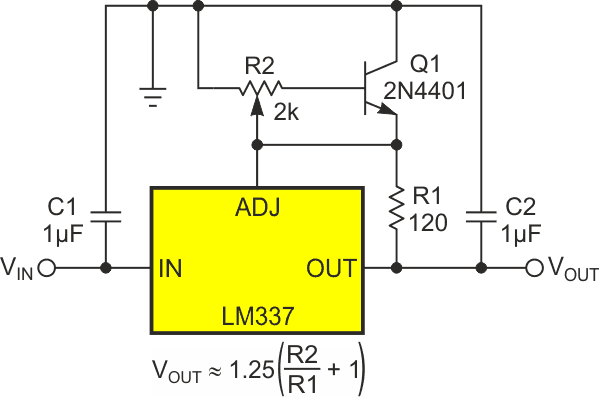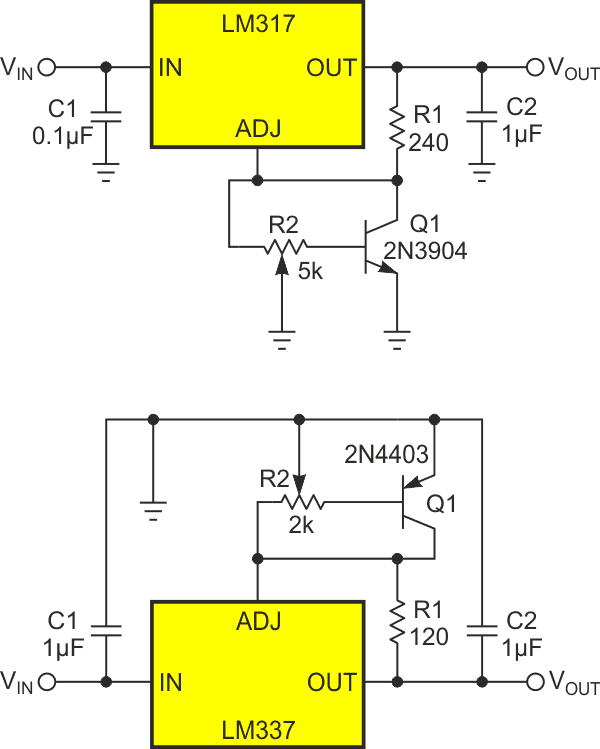Frequent contributor, Peter Demchenko, recently published “A safe adjustable regulator” (Ref. 1) discussing the likelihood and consequences of rheostat-connected voltage trimmer failure in three-terminal adjustable regulator (LM317, LM350, NTE1929, etc.) circuits, and how to avoid them. Peter observes that trimmer pot wipers, being electromechanical moving parts, are far more likely to fail than solid state components. When wipers do fail, the most probable outcome is an open circuit. In the context of adjustment circuits typically found in regulator manufacturer datasheets (see Figure 1), this will cause regulator runaway and likely a fried load!
 |
|
| Figure 1. | The typical regulator datasheet adjustment circuit. |
Peter’s solution incorporates a passive network comprising of several resistors and a range selection switch. It also includes software to facilitate calculation of the necessary component values, since the classic simple 3-terminal adjustment equation…

…won’t work for his network.
While Peter’s solution is ingenious and effective, presented here is an alternative idea. It takes advantage of the fact (also shown in Figure 1) that pots connected as rheostats (e.g., R2) have a wasted terminal: the NC end of the resistance element. This orphan is adopted and given a friend (Q1) and a happy home in the failsafe circuit of Figure 2. Here’s how it works:
 |
|
| Figure 2. | A simple failsafe circuit where the NC pin of the pot R2 (in Figure 1) is instead connected to Q1. |
In normal operation, R2’s wiper will maintain a solid connection with the pot resistance element. This will hold that node to a voltage very near that of the ADJ terminal, depriving Q1 of forward bias and holding it OFF. In this state, ordinary regulator operation is maintained, and the usual adjustment equation still applies.
But suppose, due to defect or wear-out, the pot wiper contact fails and the connection between resistance element and wiper terminal is lost as shown (X marks the spot!) in Figure 3.
 |
|
| Figure 3. | Failure is an option! |
Now, a connection will be established through R2 from Q1’s base to ground. Q1 will therefore turn ON, ADJ be pulled down to <1 V, R1’s ~5 mA bias necessary for correct regulator operation sunk, and VOUT thereby clamped to a safe and sane ~2 V.
Disaster averted. Not a bad insurance policy for the cost of one transistor.
The idea works similarly with negative regulators (Figure 4).
 |
|
| Figure 4. | Failsafe circuits with a negative regulator need an NPN Q1. |
Or, if you prefer, the pot wiper can be grounded as shown in Figure 5.
 |
|
| Figure 5. | Failsafe circuit with the pot wiper grounded. |
Reference
- Demchenko, Peter. “A safe adjustable regulator.”